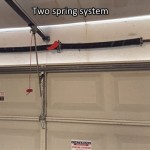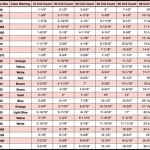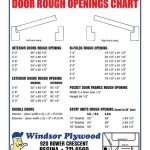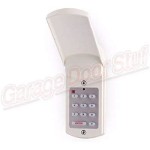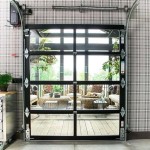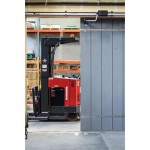Garage Door Opener with Chain: A Comprehensive Overview
A garage door opener with a chain drive represents a traditional and widely used mechanism for automating the opening and closing of residential garage doors. This type of opener utilizes a chain, similar to a bicycle chain, to pull or push the trolley that connects to the garage door. The trolley, in turn, moves along a track, causing the door to raise or lower. While newer technologies have emerged, chain-drive openers remain a popular choice due to their durability, affordability, and proven track record.
Understanding the components, operation, maintenance, and considerations associated with chain-drive garage door openers is essential for making informed decisions regarding installation, troubleshooting, and overall system performance. This article will explore these aspects in detail, providing a comprehensive overview of this prevalent garage door automation technology.
The mechanics of a chain-drive garage door opener are relatively straightforward. The motor drives a sprocket, which engages with the chain. As the sprocket rotates, it moves the chain along a rail. The trolley, firmly attached to the chain, is propelled along the rail in either direction. A connecting arm links the trolley to the garage door, translating the horizontal motion of the trolley into the vertical movement of the door. Limit switches are typically integrated into the system to regulate the travel distance of the door, preventing it from opening too far or closing with excessive force. Safety sensors are also critical components that detect obstructions in the door's path, automatically reversing the door's direction to prevent accidents.
Key Advantages of Chain-Drive Garage Door Openers
Chain-drive garage door openers offer several distinct advantages which contribute to their sustained popularity among homeowners.
One of the primary benefits is their cost-effectiveness. Compared to belt-drive or screw-drive systems, chain-drive openers generally have a lower initial purchase price. This makes them an attractive option for budget-conscious consumers or those seeking a reliable opener without extensive features.
Another significant advantage is their robustness and durability. The chain itself is typically made from heavy-duty steel, capable of withstanding considerable force and stress. This inherent strength makes chain-drive openers well-suited for lifting heavier garage doors, such as those constructed from solid wood or insulated materials. The robust construction contributes to a longer lifespan, provided that regular maintenance is performed.
Furthermore, chain-drive openers are readily available and widely supported. Replacement parts are easily accessible, and many technicians are familiar with their operation and repair. This ensures that maintenance and troubleshooting can be carried out efficiently and cost-effectively.
Despite these advantages, it is imperative to acknowledge the potential drawbacks associated with chain-drive openers. The most notable of these is their noise level. The metal-on-metal contact between the chain and sprocket can generate considerable noise during operation, which may be a concern for homeowners with attached garages or those who value quiet operation. Regular lubrication can help mitigate this noise to some extent.
Essential Components of a Chain-Drive Opener
A chain-drive garage door opener comprises several key components working in concert to automate the garage door's movement. Understanding these components allows for better troubleshooting and informed maintenance.
The motor serves as the power source, providing the rotational force required to drive the chain. Motors are typically rated in horsepower (HP), ranging from 1/2 HP to 3/4 HP for residential applications. The appropriate horsepower rating depends on the size and weight of the garage door.
The sprocket is a toothed wheel that engages with the chain, transmitting the motor's rotational force to the chain. The sprocket's design ensures proper engagement with the chain links, preventing slippage and ensuring smooth operation.
The chain is the core driving element, responsible for transferring the motor's power to the trolley. Chains are typically constructed from hardened steel for strength and durability, capable of withstanding the repeated stress of lifting and lowering the garage door.
The trolley is a carriage that moves along the rail, connected to the chain. The trolley's movement is directly translated into the opening and closing of the garage door via a connecting arm.
The rail provides a track for the trolley to travel along, ensuring smooth and controlled movement. The rail is typically made from steel and securely mounted to the garage ceiling. Its length dictates the maximum travel distance of the garage door.
Limit switches are crucial safety devices that regulate the travel distance of the garage door. These switches prevent the door from over-traveling in either direction, protecting the door and opener from damage. They are adjustable to fine-tune the door's opening and closing positions.
Safety sensors, also known as photoelectric eyes, are positioned near the floor on either side of the garage door opening. These sensors emit an invisible infrared beam. If an obstruction breaks the beam while the door is closing, the sensors trigger the opener to reverse the door's direction, preventing potential injury or damage. These sensors are mandated by safety regulations and are essential for safe operation.
The remote control and wall-mounted button provide convenient means of operating the garage door opener. They transmit signals to the opener's receiver, initiating the opening or closing sequence.
Maintenance and Troubleshooting for Chain-Drive Openers
Regular maintenance is crucial for ensuring the longevity and reliable operation of a chain-drive garage door opener. Neglecting maintenance can lead to premature wear, increased noise, and even complete failure.
Lubrication is a key aspect of maintenance. The chain should be lubricated regularly with a garage door opener-specific lubricant. This minimizes friction, reduces noise, and prevents corrosion. The trolley and rail should also be lubricated periodically to ensure smooth movement.
Visual inspections are also important. Regularly inspect the chain for signs of wear, such as broken or stretched links. Check the sprocket for worn teeth. Examine the rail for any damage or misalignment. Verify that all mounting hardware is secure and tightened.
Testing the safety features is paramount. Periodically test the safety sensors by placing an object in the door's path while it's closing. The door should reverse direction immediately. If the sensors are not functioning correctly, they should be inspected and adjusted or replaced as needed.
Troubleshooting common issues can often be addressed with simple solutions. If the opener is not responding, check the power supply and the remote control batteries. If the door is reversing unexpectedly, check for obstructions in the safety sensor path or adjust the limit switches. If the door is making excessive noise, lubricate the chain and trolley. If these simple solutions do not resolve the problem, it may be necessary to consult a qualified garage door technician.
Chain tension adjustment is also necessary. Over time, the chain can stretch, causing it to sag. This can lead to slipping and inefficient operation. The chain tension should be adjusted according to the manufacturer's instructions. Overtightening the chain can damage the opener, while undertightening can cause it to slip.
By understanding the components, operation, maintenance, and troubleshooting aspects of chain-drive garage door openers, homeowners can ensure optimal performance and longevity of their garage door automation system. Regular maintenance and prompt attention to potential issues can prevent costly repairs and ensure the safe and reliable operation of the garage door.

How To Maintain Chain Driven Garage Door Openers

Belt Vs Chain Garage Door Opener Which Is Right For You

Chain Vs Belt Drive Garage Door Openers Arapahoe Service

Chain Drive Vs Belt Garage Door Openers Spectrum Overhead

Belt Drive Vs Chain Garage Door Opener Viking

How To Tighten A Loose Sagging Chain Garage Door Opener Repair

Chamberlain 0 5 Hp Power Drive Chain Garage Door Opener At Lowes Com

How To Adjust Your Garage Door Chain

The Ups And Downs Of Chain Screw Belt Garage Door Openers A Better

How To Tighten Garage Door Opener Chain


